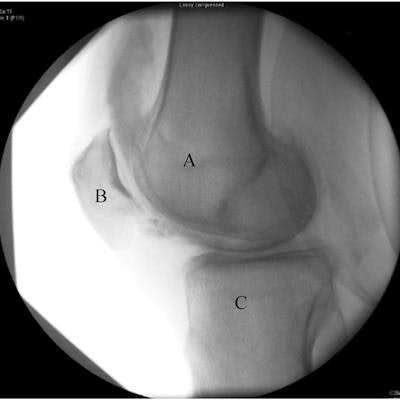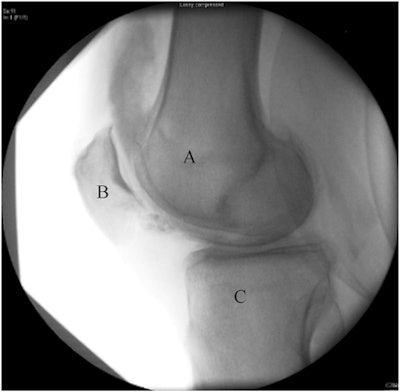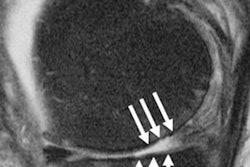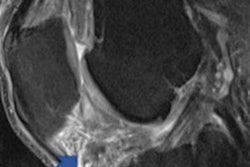
Fluoroscopy images of knee injections to reduce pain in osteoarthritis patients have revealed for the first time how the injectate spreads within the knee in a study published online January 14 in Interventional Pain Medicine.
In a case series, researchers at Mount Sinai Hospital in New York City performed fluoroscopy on patients before and after they received ultrasound-guided hyaluronic acid knee injections. Their findings revealed how the injectate spreads and validates the ideal anatomical location for the injections, they wrote.
"The ability of intra-articular injections to provide relief in patients with knee osteoarthritis is contingent upon the accurate delivery of the injectate into the joint space," wrote first author Dr. Caroline Varlotta, a physiatrist.
Injection with viscosupplements is a common treatment for knee osteoarthritis, yet there is a lack of knowledge about how the injectate actually spreads within the knee following an injection, according to the authors.
In this study, the group recruited 14 patients. All participants had preinjection fluoroscopic images taken, and then received ultrasound-guided injections. Lidocaine was initially injected, and after a bursal spread was identified, the syringe was exchanged for a solution of hyaluronic acid that has been premixed with contrast.
 Postambulation contrast spread. A = Distal femur, B = Patella, C = Proximal tibia. Image courtesy of Interventional Pain Medicine through CC BY 4.0.
Postambulation contrast spread. A = Distal femur, B = Patella, C = Proximal tibia. Image courtesy of Interventional Pain Medicine through CC BY 4.0.The patients then walked for three minutes and did 10 sit-to-stand maneuvers from a chair. After this, fluoroscopy images were taken again. The anatomical location of the injectate was then assessed by two radiologists and one interventional physiatrist.
Analysis of the images showed that injectate placed in the suprapatellar recess using the ultrasound-guided technique disperse from the suprapatellar recess into the tibiofemoral or patellofemoral joint after a brief walk with a sensitivity of 96.3% and specificity of 50%, the researchers wrote.
"Fluoroscopic imaging confirmed that ultrasound-guided injection of hyaluronic acid into the suprapatellar recess dispersed into the tibiofemoral joint after a walking test," the authors wrote.
Ultimately, the validates ultrasound as an effective modality and the suprapatellar recess as an ideal anatomical location for intra-articular knee injections in patients with osteoarthritis, the researchers wrote.
They noted that future studies should examine whether the amount of injectate found in the tibiofemoral joint is correlated with patient outcomes.
"Other characteristics that may affect dispersion, like osteoarthritis severity, injectate viscosity, and the location of the injection should be studied in the future," Varlotta and colleagues concluded.




















